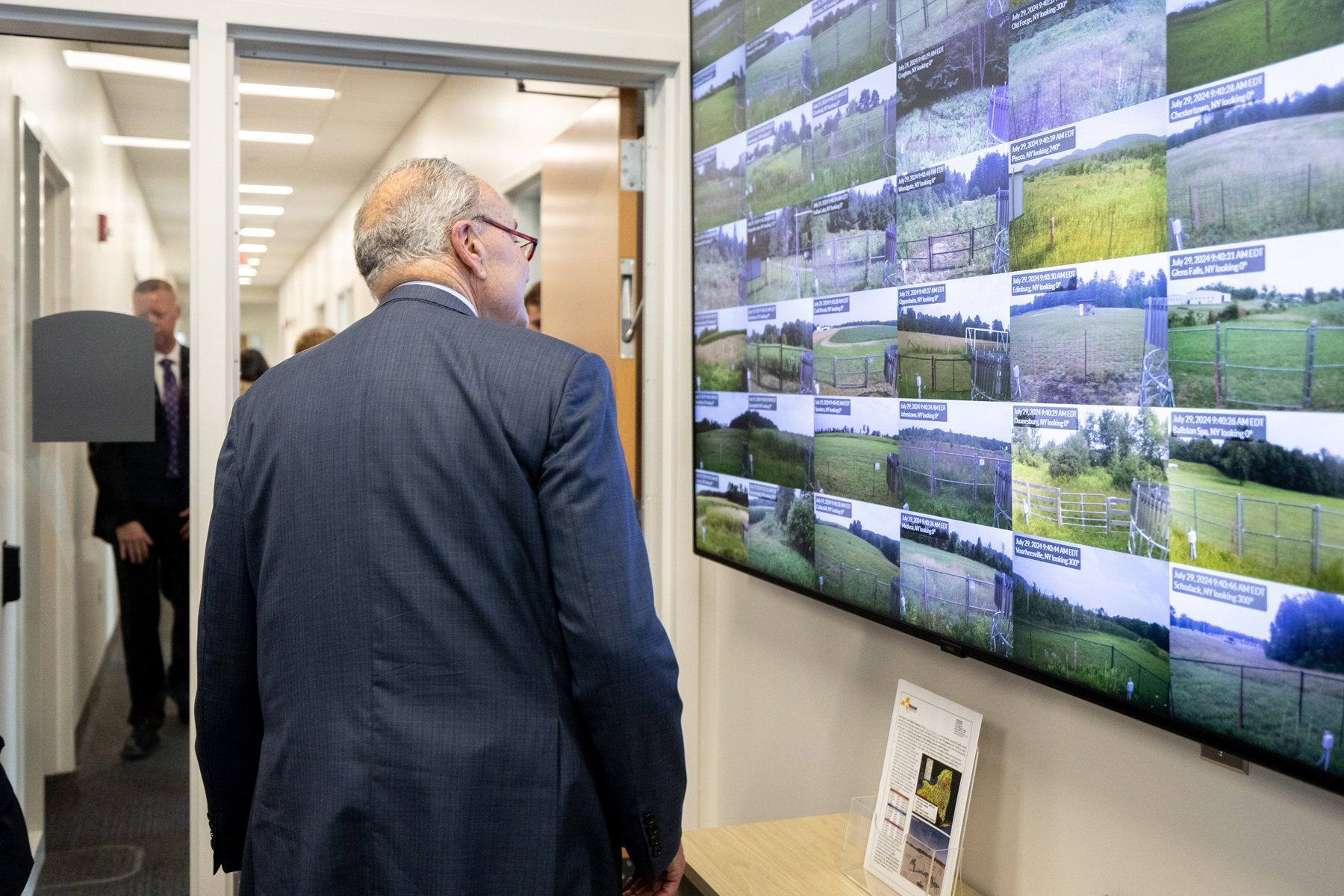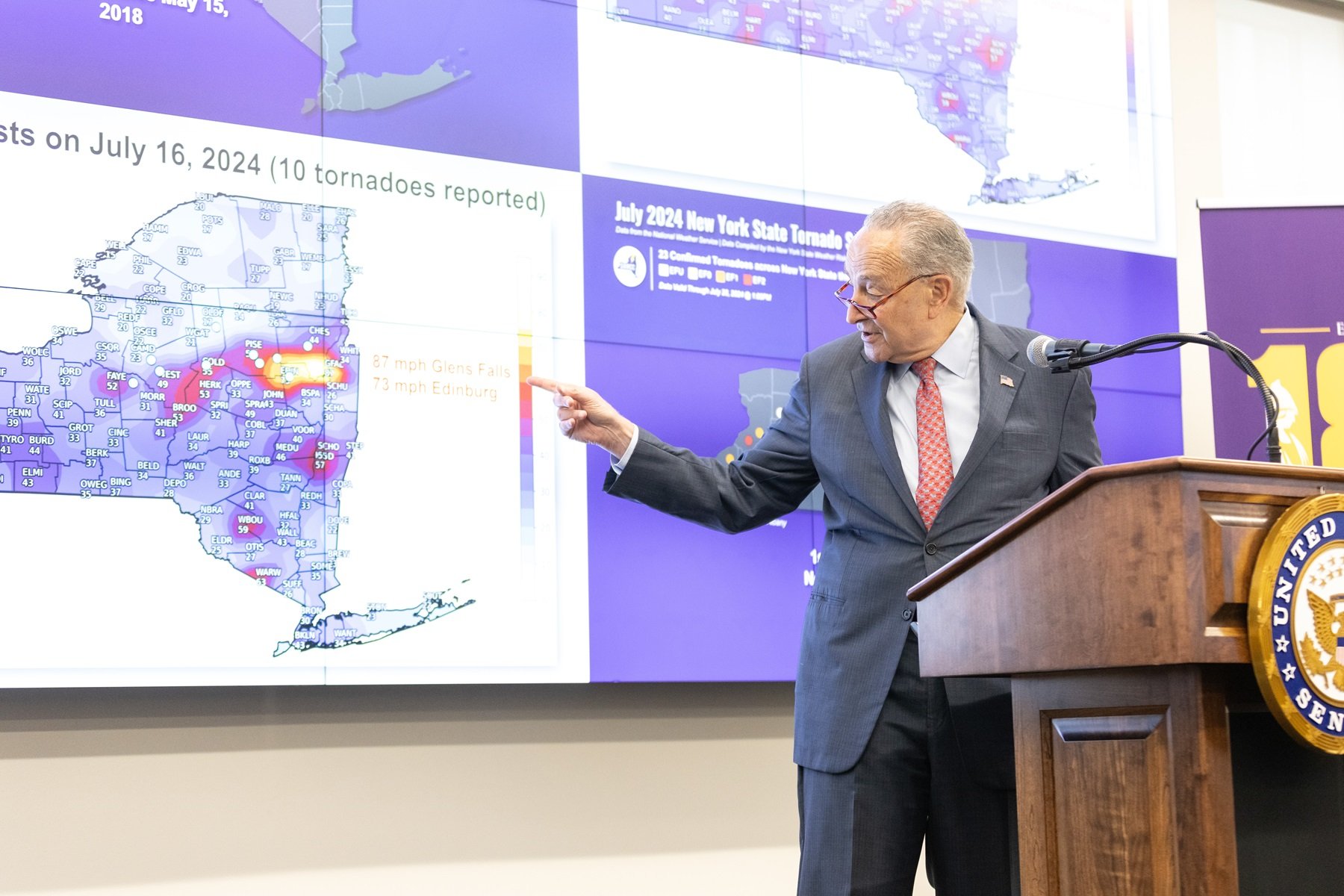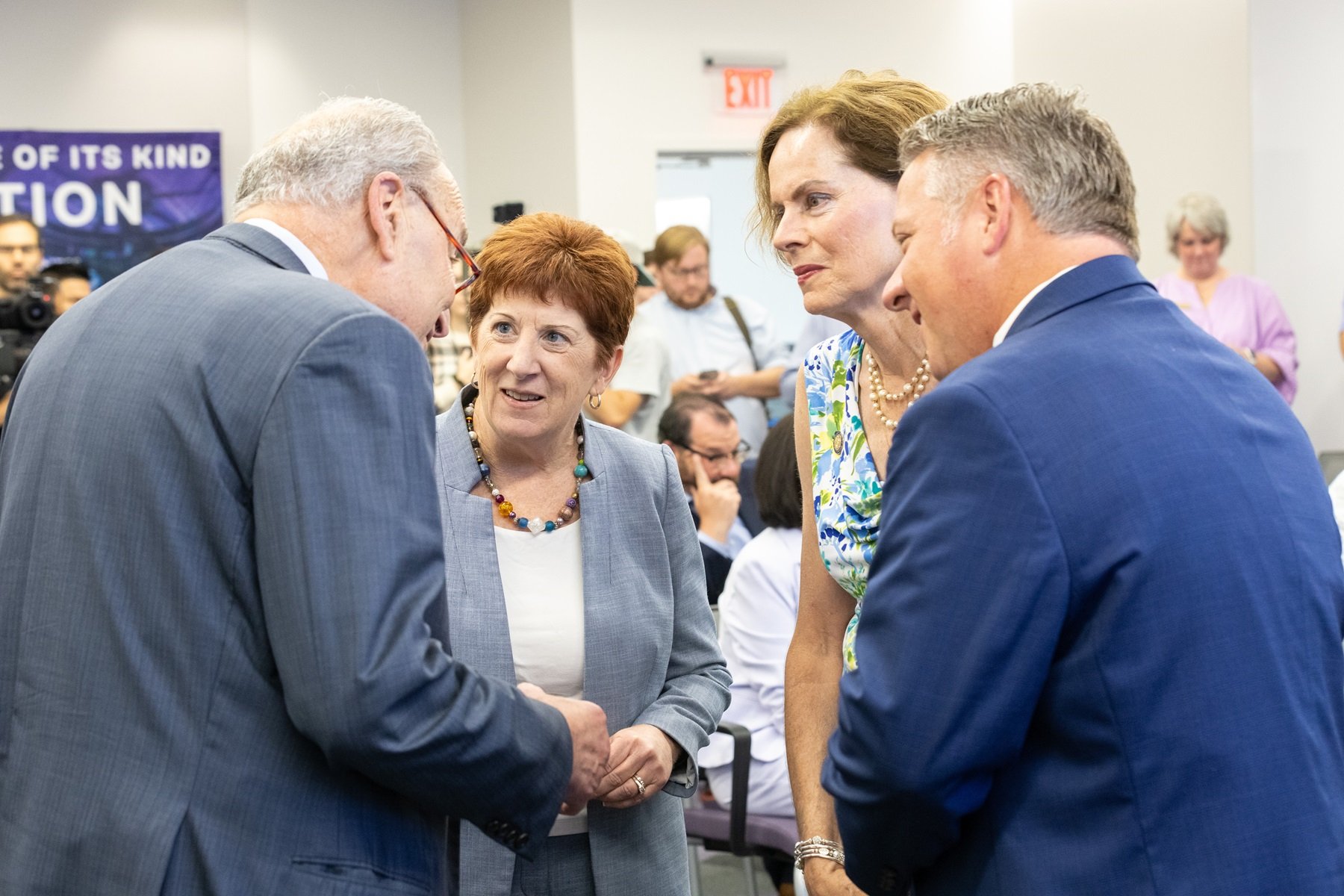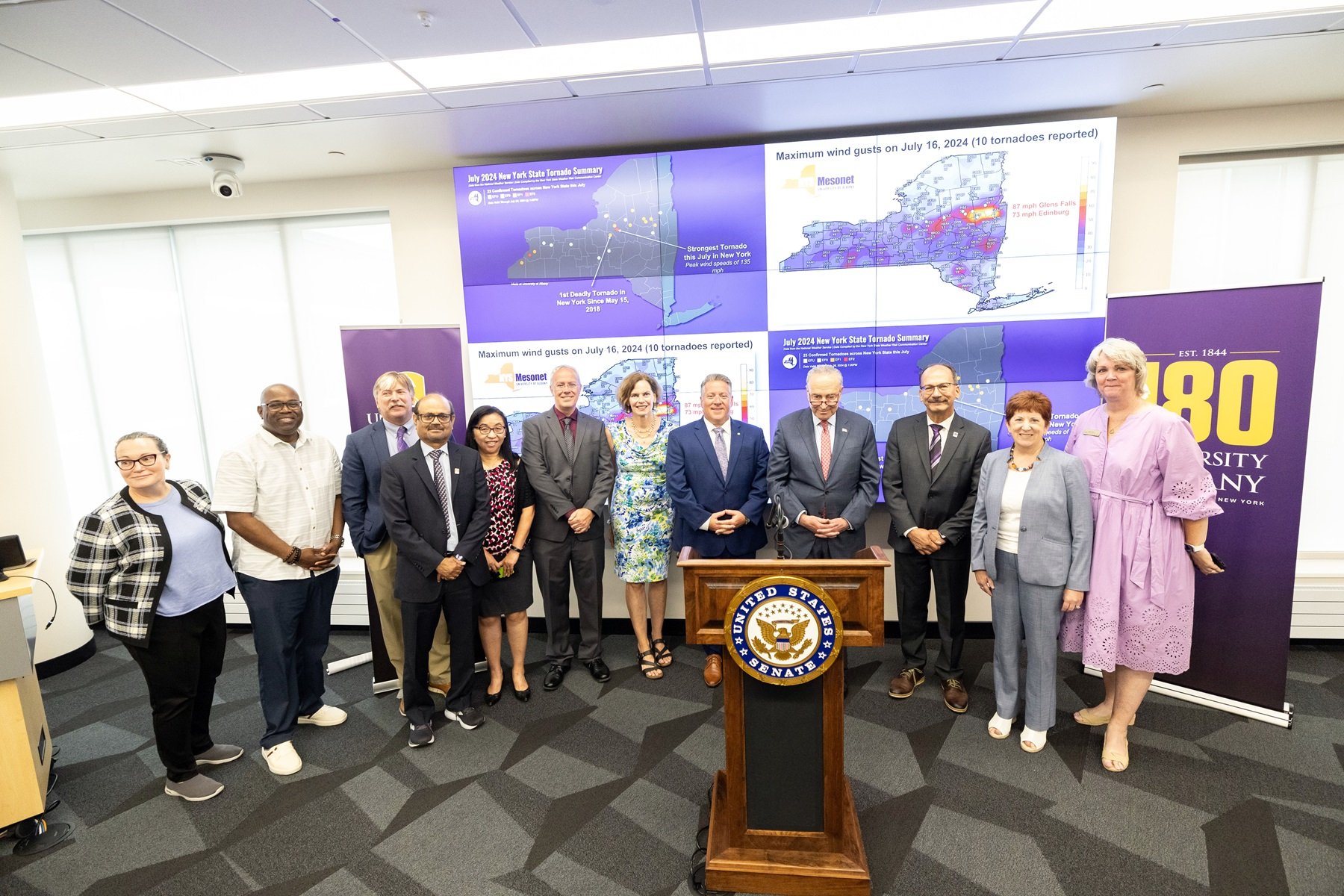Schumer Touts NYS Mesonet as National Model Amid Federal Funding Push
By Mike Nolan
ALBANY, N.Y. (July 30, 2024) — Sen. Chuck Schumer on Monday visited the University at Albany’s ETEC research and development complex to tout the New York State Mesonet as a national model amid a new push to increase federal funding for the National Mesonet Program.
The National Mesonet Program is the central repository for all 33 Mesonet weather networks in the United States, including the NYS Mesonet operated by UAlbany, which is the largest and the most sophisticated statewide weather monitoring system in the nation.
Schumer is pushing for $30 million in federal funding for the National Mesonet program — a $10 million increase from last year’s federal budget.
He was joined Monday by UAlbany President Havidán Rodríguez, NYS Mesonet Executive Director Chris Thorncroft, NYS Mesonet Director June Wang, local elected officials and members of the UAlbany community.
“This past month we saw a record setting 20-plus tornadoes in Upstate New York, and what we’re seeing more and more across the country is increasing extreme weather that we need to be prepared for,” said Schumer. “Thanks to the University at Albany, New York has an excellent network of weather observation stations scattered across the state, at least one in every county, a part of a national system critical for weather forecasting and emergency response with hyper-local data.
“We need to make sure the National Mesonet Program has what it needs ... so we are prepared for whatever punches Mother Nature delivers.”
Keeping New Yorkers Safe When Severe Weather Strikes
Launched in 2018, the NYS Mesonet features 127 standard weather stations, including its new Lake Placid site. Each site, spaced about 17 miles apart across the state, is equipped with automated sensors that measure weather information in real-time, such as temperature, humidity, wind speed and direction, pressure, precipitation, solar radiation, snow depth and soil information. The sites also have cameras that photograph current conditions.
In addition, there are several sub-networks of specialty sites, including a Profiler Network of 17 sites that provide additional data about the atmosphere vertically; a Flux Network of 18 stations that monitor surface energy; and a Snow Network of 20 sites measure the water content of snow.

Mesonet data is collected every five minutes, feeding weather prediction models and decision-support tools for users across New York, including government officials, emergency managers and the general public.
The National Mesonet Program is the single largest external funding source for the NYS Mesonet. The program’s funding — $3.3 million since 2018 — has been essential to keeping the network operational. The program is critical to the network's day-to-day operations and keeping it online.
“The New York State Mesonet at the University at Albany has provided invaluable data to emergency managers across the state and to our colleagues at the National Weather Service. Its success would not be possible without funding from the National Mesonet Program and the strong support of Sen. Schumer,” said President Rodríguez. “We applaud his call to expand this critical federal program and make Americans safer through the power of advanced early warning when severe weather strikes.”
Supporting the Nation’s Weather Response
The latest funding push adds to years of Schumer’s support for improving severe weather monitoring in New York and across the U.S.
Last year, he announced $1.35 million in federal research funding for the NYS Mesonet. That funding is being used to help the National Weather Service better leverage data from 17 Mesonet profiler sites, each of which are equipped with a Doppler laser system, known as LiDAR, that provides real-time data about the atmosphere up to six miles above ground.

The year prior, he helped secure another $900,000 in the federal budget that is being used to better understand how the NYS Mesonet profiler data can inform the deployment of New York’s renewable energy generation facilities (both onshore and offshore wind and solar) and provide more accurate forecasts of production and power demand.
In addition, UAlbany researchers received $3 million in federal research funding from the Department of Homeland Security last year for a project called EMPOWER that is focused on leveraging Mesonet data to create a suite of new support tools that are designed for emergency managers, first responders and other public and private stakeholders.
“With severe weather increasing in frequency and intensity, real-time Mesonet weather data will be critical for emergency management and public safety across the U.S.," Thorncroft said. "We are thankful to Sen. Schumer for recognizing the importance of these powerful weather monitoring tools, especially as we work to better harness the potential of AI to put this data to work to protect lives and property. The senator's tireless work to secure more federal investment ensures our Mesonet networks are fully operational and ready to support the nation’s weather response."
“Without federal investment, New York’s weather forecasting ability could become partly cloudy. We need it to be as clear as possible so that we can keep the country prepared and safe. I’m pushing for a $10 million increase in federal funding so that we can ensure that this critical tool is in great shape,” Schumer said.
The National Mesonet Program is a public-private partnership with NOAA and the National Weather Service. Schumer’s federal boost would be used to maintain, expand and provide technology upgrades to the networks that are necessary to keep pace with the nation’s severe weather events.










